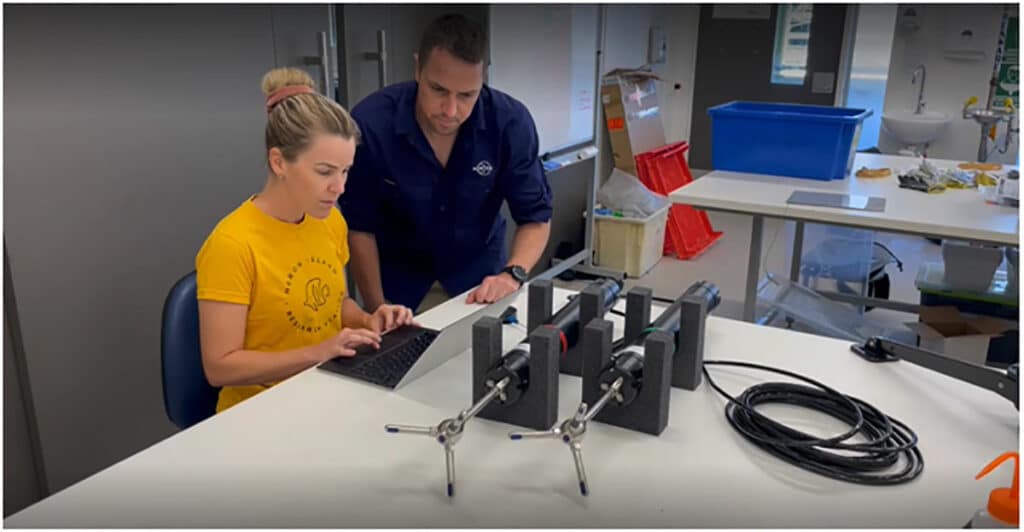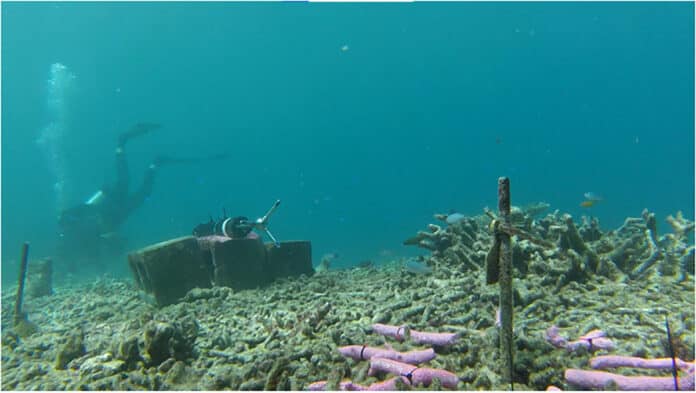Are you aware of the devastating effects of climate change on our precious coral reefs? As global temperatures rise, our coral reefs are experiencing severe damage. However, there is hope! Scientists are exploring innovative ways to repair and restore these vital ecosystems.
Researchers at the Heron Island Research Station in Australia are using a Nortek velocimeter to determine the amount of hydrodynamic energy required to move around coral rubble in the ocean. This rubble is essentially made up of skeletons of corals that have been broken apart due to bleaching or storm events in the ocean. Interestingly, researchers have found that stabilizing the rubble can be a useful technique for helping coral reefs recover.
Vast areas of coral rubble in the Great Barrier Reef due to bleaching or storm events can hinder the natural recovery of the reef. However, if the rubble remains in one place for an extended period, new and healthy corals can recruit onto it, helping the reef to recover naturally. The problem arises when the rubble moves around a lot due to waves and currents, as this can cause new corals living on it to die.
Rubble stabilization interventions can be deployed in areas where the rubble is prone to frequent movement, but the challenge lies in identifying those areas.
“With climate change, we’re going to see more frequent and intense storms and cyclones, as well as coral bleaching events,” says Dr. Tania Kenyon, Postdoctoral Researcher in the Marine Spatial Ecology Lab at the University of Queensland in Australia.

Researchers have used a Vector velocimeter developed by Nortek to study water flow and the movement of coral rubble. The scientists, led by Dr. Kenyon, found correlations between the movement of rubble pieces and flow disturbances, which helped them determine the amount of hydrodynamic energy required to move coral rubble.
“What we’re doing with the Vector is looking at rubble mobilization thresholds. We’re using it to monitor the hydrodynamic environment while also looking at the movement of rubble pieces,” Dr. Kenyon explains. “From previous work I’ve done in the Maldives, we’ve found movement thresholds of about 0.3 to 0.4 m/s. We’re furthering that work now on the southern Great Barrier Reef.”
Coral reefs are critical for supporting life in the ocean, as they provide a habitat for millions of marine species. They are among the most productive and diverse ecosystems on Earth, and they contribute to many human development goals like sustainable fishing, the discovery of new species for medicine, and attracting tourism revenue for local communities.
The team will use their findings to identify sites that could benefit from coral rubble stabilization techniques, which could help natural coral recovery. They will create maps of the Great Barrier Reef that show priority areas for such interventions, i.e., areas in the ocean where the rubble movement is too high for coral regeneration to occur.
Dr. Kenyon and her colleagues from the University of Queensland and Queensland University of Technology are part of the Rubble Stabilisation Subprogram team working to stabilize the rubble on the Great Barrier Reef. They are part of the Reef Restoration and Adaptation Program (RRAP), a partnership between the Australian Government and the Great Barrier Reef Foundation that aims to restore and protect the reef.
The team’s work will help identify areas appropriate for rubble stabilization intervention efforts, using techniques such as biodegradable meshes, rock piles, and MARS Reef Stars. These methods can help prevent the rubble from moving and damaging the coral. Over time, the rubble can be naturally bound together by sponges, coralline algae, and other marine organisms into a stable surface, like bricks and mortar.
Dr. Kenyon hopes that the outcomes of this research can be used to identify the best coral restoration techniques for reefs worldwide and help them navigate the challenges of climate change.
“There is hope for our reefs if we give them the best fighting chance,” says Dr. Kenyon. “If we bolster their resilience and foster adaptation through various interventions while also moving to clean energy, we can hopefully hold onto these crucially important ecosystems.”
